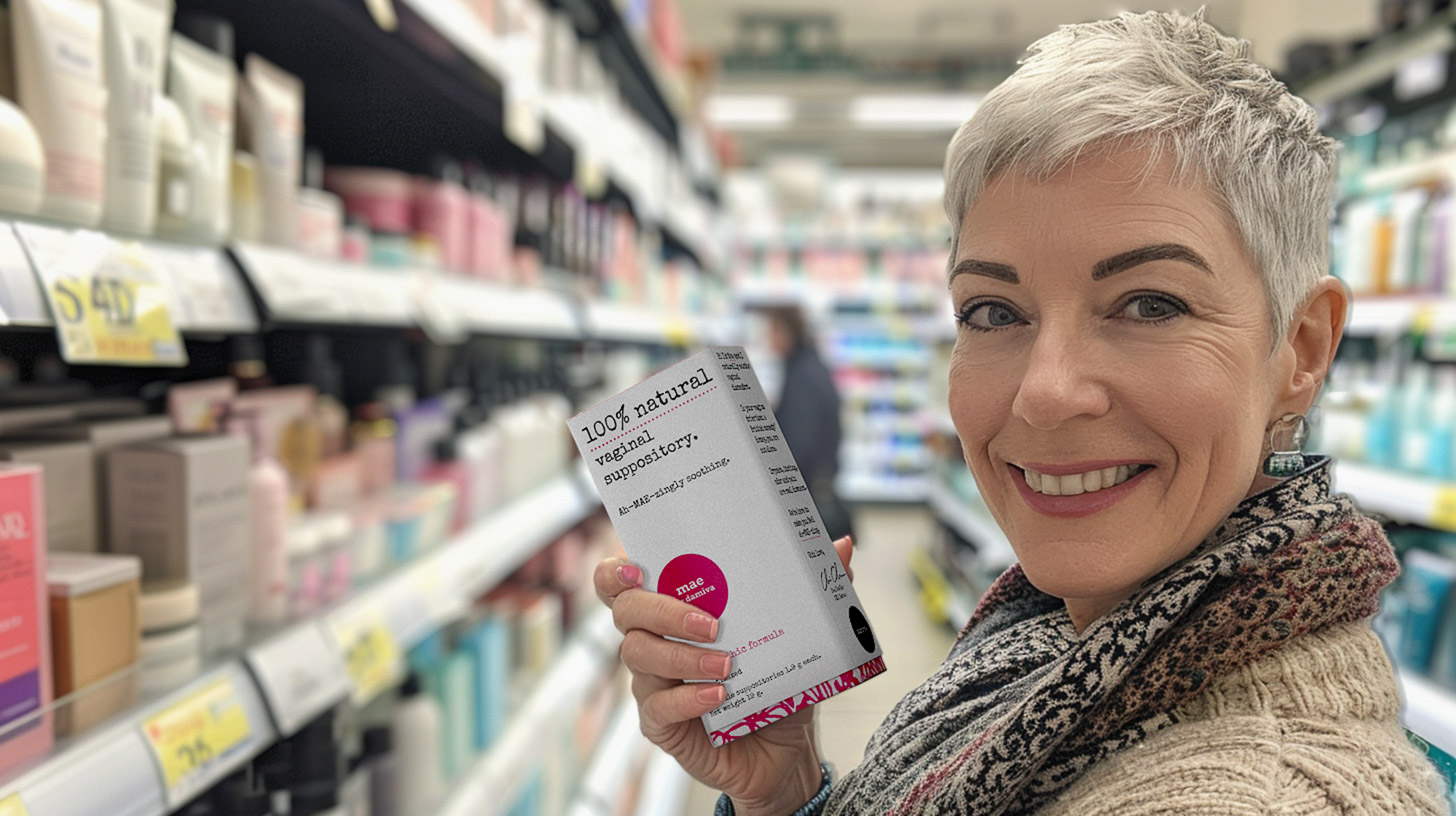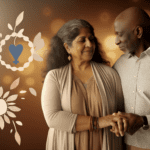Introduction to Hormone Health and Exercise
Understanding the Hormonal Changes in Women Over 45
As women age, particularly after the age of 45, they experience significant hormonal changes that can affect their overall health. The transition into menopause is marked by a decline in estrogen and progesterone, hormones that have protective effects on bone density, heart health, and more. These changes can lead to symptoms such as hot flashes, mood swings, and increased risk of osteoporosis and cardiovascular disease. Understanding these hormonal shifts is crucial for tailoring exercise and lifestyle interventions to mitigate associated health risks.
The Role of Exercise in Managing Hormonal Imbalance
Exercise plays a pivotal role in managing hormonal imbalances. Regular physical activity can help to moderate the fluctuations of hormones such as estrogen and cortisol, which in turn can alleviate menopausal symptoms and reduce the risk of chronic conditions. Exercise also boosts the production of endorphins, which can improve mood and energy levels, counteracting some of the emotional and psychological challenges that come with hormonal changes.
Setting the Stage: Exercise as a Non-Pharmaceutical Remedy
While hormone replacement therapy (HRT) is an option for managing symptoms of menopause, exercise offers a non-pharmaceutical remedy that carries a multitude of additional health benefits. By incorporating regular physical activity into their routine, women can improve their hormonal health while also enhancing their cardiovascular fitness, strength, and flexibility, which are vital for healthy aging.
Overview of Hormones Affected by Exercise
Several key hormones are influenced by exercise, including:
- Estrogen and Progesterone: Moderate exercise can help in maintaining a balance of these hormones, which are particularly important for women over 45.
- Cortisol: Often referred to as the stress hormone, cortisol levels can be regulated through regular aerobic exercise and mind-body practices like yoga.
- Insulin: Physical activity improves insulin sensitivity, which is crucial for maintaining blood sugar levels and preventing type 2 diabetes.
- Endorphins: Exercise stimulates the production of these natural mood lifters, helping to alleviate symptoms of depression and anxiety.
By understanding the interplay between exercise and these hormones, women can better tailor their workout regimens to support their hormonal health.
The Science of Exercise and Hormone Regulation
How Physical Activity Influences Endocrine Function
Physical activity plays a pivotal role in the regulation of the endocrine system, which is responsible for hormone production and release. Exercise can induce changes in hormone levels, influencing metabolism, growth, and stress responses. For instance, during physical activity, the body increases the production of endorphins, known as “feel-good” hormones, which can help alleviate pain and induce a sense of well-being. Additionally, exercise can enhance insulin sensitivity, allowing the body to better manage blood glucose levels, which is particularly beneficial for individuals with insulin resistance or type 2 diabetes.
The Impact of Exercise on Estrogen and Progesterone
Exercise has a significant impact on the levels of sex hormones, particularly estrogen and progesterone, which are crucial for reproductive health. Regular moderate exercise can help maintain balance in estrogen levels, which is beneficial for women, especially those over 45 who may experience hormonal fluctuations due to perimenopause or menopause. However, excessive exercise can lead to disruptions in menstrual cycles and affect the balance of these hormones, potentially leading to conditions such as amenorrhea.
Exercise and Its Effects on Cortisol Levels
Cortisol, often referred to as the “stress hormone,” is closely linked to exercise. While acute bouts of exercise can temporarily increase cortisol levels, aiding in the mobilization of energy stores, chronic stress from overtraining or lack of recovery can lead to persistently elevated cortisol levels. This can have detrimental effects, including impaired recovery, decreased immune function, and potential muscle breakdown. Therefore, it is crucial to balance exercise intensity and recovery to maintain healthy cortisol levels.
Insulin Sensitivity and Physical Activity
Physical activity is a powerful modulator of insulin sensitivity. During exercise, muscle contractions stimulate glucose uptake independently of insulin, which can lower blood glucose levels. Over time, regular physical activity can lead to improved insulin sensitivity and glucose tolerance, which is particularly important for preventing and managing metabolic disorders such as type 2 diabetes. Different types of exercise, including aerobic and resistance training, have been shown to enhance insulin action in muscle tissues.
Designing a Hormone-Friendly Workout Regimen
Identifying the Right Type of Exercise for Hormonal Health
When it comes to tailoring a workout regimen for hormone health, it’s crucial to recognize that not all exercises impact hormones in the same way. The goal is to choose activities that support hormonal balance rather than exacerbate imbalances. For instance, low-impact exercises such as yoga or Pilates can be particularly beneficial during the luteal phase of a woman’s cycle when hormone levels are fluctuating. Conversely, high-intensity interval training (HIIT) may be more suitable during the follicular phase, when energy levels are higher and the body is primed for more vigorous activity.
The Importance of Exercise Intensity and Duration
Understanding the interplay between exercise intensity, duration, and hormonal responses is key. Short bursts of high-intensity exercise can boost metabolism and improve insulin sensitivity, which is beneficial for hormones like insulin and cortisol. However, prolonged high-intensity workouts without adequate recovery can lead to elevated cortisol levels, potentially disrupting hormonal equilibrium. Therefore, it’s essential to strike a balance, incorporating both moderate and high-intensity workouts with appropriate rest periods to optimize hormone health.
Incorporating Strength Training and Cardiovascular Workouts
Both strength training and cardiovascular exercises play a pivotal role in a hormone-friendly workout regimen. Strength training, particularly, is effective in building lean muscle mass, which in turn helps regulate hormones like testosterone and growth hormone. Cardiovascular exercise, on the other hand, is excellent for heart health and improving blood flow, which can positively affect hormone distribution and efficacy. A combination of the two, adjusted for the menstrual cycle’s phases, can lead to a harmonious hormonal state.
Mind-Body Exercises for Stress Reduction and Hormonal Balance
Mind-body exercises such as meditation, deep breathing, and tai chi can significantly reduce stress levels, thereby lowering cortisol and adrenaline levels that, if chronically elevated, can disrupt hormonal balance. Incorporating these practices into a workout regimen can provide a calming counterbalance to the physical stress of exercise, promoting overall hormonal health and well-being.
In conclusion, designing a hormone-friendly workout regimen requires a nuanced approach that respects the body’s hormonal fluctuations throughout the menstrual cycle. By aligning exercise types, intensities, and durations with these natural changes, women can support their hormonal health, enhance their fitness outcomes, and improve their quality of life.
Exercise Protocols for Specific Hormonal Issues
Managing Estrogen Decline Through Targeted Workouts
As women age, particularly over the age of 45, estrogen levels naturally begin to decline. This hormonal shift can lead to a variety of physical changes, including decreased bone density, reduced muscle mass, and increased abdominal fat. To combat these effects, targeted workouts can be instrumental. Strength training, for example, is crucial as it helps maintain and build muscle mass, which in turn supports bone health. Compound movements such as squats, deadlifts, and bench presses are particularly effective. Additionally, weight-bearing exercises like walking and jogging can help maintain bone density. It’s important to incorporate these exercises into a regular fitness routine to mitigate the effects of estrogen decline.
Exercises to Support Pelvic Health and Prevent Incontinence
Pelvic floor health is a significant concern for many women, especially after childbirth and during menopause. Exercises known as Kegels, which involve contracting and relaxing the pelvic floor muscles, can strengthen these muscles and help prevent incontinence. Pilates and yoga can also be beneficial as they focus on core strength, including the pelvic floor. Incorporating balance and functional exercises can improve overall pelvic stability and support.
Workouts to Reduce the Risk of Breast Cancer
Regular physical activity has been associated with a lower risk of breast cancer. Aerobic exercises, such as brisk walking, running, and cycling, can help reduce body fat, which is important because high body fat levels have been linked to an increased risk of breast cancer post-menopause. Resistance training can also be beneficial by improving body composition and metabolic health. Aim for at least 150 minutes of moderate-intensity or 75 minutes of high-intensity aerobic activity per week, along with two days of strength training.
Addressing Insulin Resistance with Exercise
Insulin resistance is a condition where the body’s cells do not respond effectively to insulin, leading to elevated blood sugar levels. To improve insulin sensitivity, a combination of aerobic and resistance training is recommended. High-Intensity Interval Training (HIIT) can be particularly effective for improving insulin sensitivity and reducing abdominal fat. Consistency in exercise routines is key, with a focus on gradual progression in intensity to avoid excessive stress on the body.
It is essential to consult with a healthcare provider before starting any new exercise regimen, especially for those with existing health conditions or hormonal imbalances. Tailoring the workout to individual needs and abilities is crucial for hormone health and overall well-being.
By the way, something for you, a little gift!!!
I am just in the middle of publishing my book. It’s about How women can balance their hormones. One part is about food and diet, of course.
Follow this link and enter your email.
I will send you this part of the book for free once the book is published. It has many concrete, practical tips and recipes and will help you feel better during menopause or times of Big hormonal fluctuations.
Annette, Damiva Lead for Health & Wellness

Lifestyle Considerations for Hormonal Health
Nutrition and Hormone Health: What to Eat and Avoid
Proper nutrition is a cornerstone of hormone health, particularly for women over 45 experiencing hormonal changes. A diet rich in phytoestrogens, found in foods like flaxseeds and soy, can help balance estrogen levels. Omega-3 fatty acids, prevalent in fatty fish and walnuts, support hormone synthesis and reduce inflammation. Conversely, it’s advisable to limit intake of processed foods, excessive caffeine, and alcohol, which can disrupt hormonal balance.
The Importance of Sleep in Hormonal Regulation
Quality sleep is vital for hormonal regulation. During sleep, the body repairs itself and regulates stress hormones like cortisol. Aim for 7-9 hours of restful sleep per night. Establishing a regular sleep routine, reducing screen time before bed, and creating a comfortable sleep environment can enhance sleep quality and, in turn, hormonal health.
Managing Stress for Optimal Hormonal Balance
Chronic stress can wreak havoc on hormone levels, particularly cortisol. Incorporating stress-reduction techniques such as mindfulness, yoga, or deep-breathing exercises can mitigate the adverse effects of stress on hormone health. Regular physical activity is also an effective stress reliever and hormone regulator.
Avoiding Endocrine Disruptors in Personal Care Products
Many personal care products contain chemicals that can interfere with endocrine function. To protect hormonal health, opt for products labeled “paraben-free” or “phthalate-free” and consider using natural or organic skincare and cosmetic products. Being mindful of product ingredients can help reduce exposure to potential endocrine disruptors.

⭐️⭐️⭐️⭐️⭐️ “My biggest symptoms are GSM, and because of Mae, they are mostly addressed. I have lived Mae for almost 7 years, and I endorse it all the time.” Margaret C., Damiva Mae Customer
⭐️⭐️⭐️⭐️⭐️ “I’m in my 60’s and post menopause. My doctor recommended I try Damiva MAE, after taking me off hormones (due to developing cysts). I LOVE it. All natural, no hormones, Great vaginal moisturizer. Easy to insert and pleasant smell. So Thankful for MAE.” Paula, Damiva Mae Customer
Overcoming Barriers to Exercise
Dealing with Common Exercise Hurdles in Menopause
Menopause can bring about various challenges that make regular exercise seem daunting. Hormonal fluctuations may lead to fatigue, mood swings, and weight gain, while physical changes like decreased bone density and joint pain can make certain activities uncomfortable. To overcome these hurdles, it’s essential to:
- Choose low-impact exercises: Activities such as swimming, cycling, or yoga can be gentler on the joints while still providing cardiovascular and strength-building benefits.
- Focus on flexibility and balance: Incorporating stretching and balance exercises can help maintain mobility and reduce the risk of falls.
- Listen to your body: Adjusting the intensity and duration of workouts based on how you feel each day can help manage energy levels and prevent burnout.
Creating a Sustainable and Enjoyable Exercise Routine
To ensure long-term adherence to an exercise routine, it’s crucial to find activities that you enjoy and can realistically fit into your schedule. Consider:
- Variety: Mixing different types of workouts can keep things interesting and work various muscle groups.
- Social support: Exercising with friends or joining a fitness group can provide motivation and accountability.
- Setting achievable goals: Start with small, attainable objectives and gradually build up to more challenging ones.
Finding Support and Community for Fitness Goals
Building a support network can be a game-changer for staying on track with fitness goals. Look for:
- Exercise groups: Joining a local walking club or fitness class can provide a sense of community.
- Online forums: Participating in online communities can offer encouragement and advice from others with similar goals.
- Professional guidance: Working with a fitness trainer or physical therapist can help tailor a routine to your needs.
Adapting Workouts to Changing Energy Levels and Abilities
As energy levels and physical abilities fluctuate, it’s important to adapt your workouts accordingly. This might mean:
- Shorter sessions: Breaking up exercise into shorter, more frequent sessions can help manage fatigue.
- Lower intensity: Opting for moderate activities that maintain heart health without excessive strain.
- Rest days: Allowing adequate recovery time between workouts to prevent overexertion.
Conclusion: Empowering Women Through Exercise and Education
By addressing common exercise barriers and adapting routines to individual needs, women can navigate menopause with confidence and maintain a healthy, active lifestyle. Education and support play vital roles in empowering women to prioritize their fitness and well-being during this transitional phase.
Conclusion: Empowering Women Through Exercise and Education
Summarizing the Benefits of Exercise for Hormone Health
Throughout this article, we have explored the profound impact that exercise has on hormone health, particularly for women over the age of 45. Regular physical activity is instrumental in managing hormonal imbalances that occur during menopause and beyond. By engaging in a tailored workout regimen, women can influence the levels of critical hormones such as estrogen, progesterone, cortisol, and insulin. Exercise not only helps in regulating these hormones but also mitigates the symptoms associated with their fluctuations, such as hot flashes, mood swings, and weight gain.
Encouraging Lifelong Fitness and Well-Being
Adopting a lifestyle that includes consistent exercise is essential for maintaining hormone health and overall well-being. It is never too late to start, and the benefits extend far beyond hormone regulation. Exercise improves cardiovascular health, strengthens bones, enhances mood, and promotes a healthy weight. Encouraging women to view exercise as a lifelong commitment is crucial. By doing so, they can enjoy increased vitality, improved quality of life, and potentially a reduction in the risk of hormone-related diseases.
Resources and Further Reading for Continued Learning
Education is a powerful tool in empowering women to take control of their hormone health through exercise. There are numerous resources available for those seeking to deepen their understanding and refine their approach to fitness. Recommended readings include publications from the American College of Sports Medicine and the North American Menopause Society, which offer guidelines and research on exercise in the context of women’s health. Additionally, books such as “The Menopause Thyroid Solution” by Mary J. Shomon and “The Hormone Cure” by Dr. Sara Gottfried provide valuable insights into managing hormonal changes through lifestyle interventions.
For ongoing education, women can turn to reputable websites, join support groups, or consult with fitness professionals who specialize in women’s health. By staying informed and connected, women can continue to adapt their exercise routines to their changing hormonal landscape and maintain their commitment to health and fitness.











